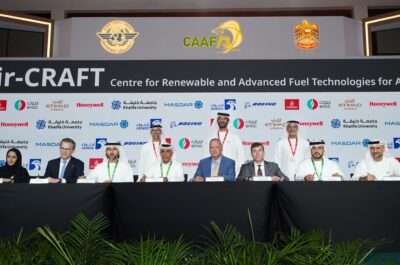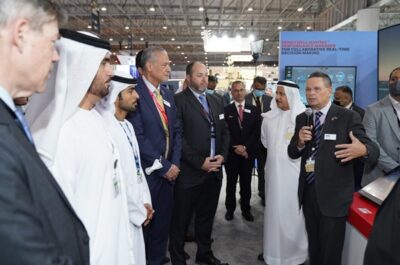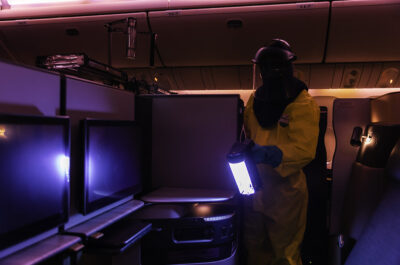4,900-5,600 new civilian helicopter deliveries expected during 2013-2017 period, with strong demand focused in the first three years of the survey. Five-year purchase expectations up 4 points compared with 2012 worldwide; North America purchase plans up for first time in four years.
LAS VEGAS – In its 15th Turbine-Powered Civil Helicopter Purchase Outlook report, Honeywell expects that global deliveries of new civilian-use helicopters will increase to between 4,900 to 5,600 over the five-year period 2013–2017. The forecast shows improved purchase plans for new helicopters in every region of the world.
North American buying plans increased for the first time in half a decade, and Latin America posted the highest regional level of five-year fleet replacement and expansion at 34 percent.
Based on survey results, delivery rates of new helicopters over the next three years are expected to reach 1,000 new units each year. Purchase plans for new helicopters for this three-year time frame are 35 percent higher than last year’s survey. The latter part of the five-year outlook is also expected to fill in and achieve similar delivery rates if economic recovery trends are sustained.
“The buyer confidence reflected in this year’s survey is a much needed shot in the arm for the industry,” said Brian Sill, vice president, Honeywell Aftermarket Helicopter Sales. “Supporting the growth numbers is the fact that helicopter usage for corporate, oil and gas, utility, and training missions is improving, which shows that helicopters are value-add aircraft in today’s business environment.”
Drivers for new purchase expectations were aircraft age and condition, contractual requirements, change in operational requirements, expiring warranties, and regulations requiring twin engines.
The five-year share of demand from the United States and Canada is 27 percent, and combined the Western Hemisphere represents 47 percent of total global demand. Europe’s share of five-year demand closely matches that of North America with 28 percent. Demand in Asia/Oceania accounts for 19 percent over the next five years, and the Africa/Middle East share should tally a little over 6 percent.
Global five-year fleet replacement and expansion plans decreased last year with a dip of 4 points in expectations versus 2011 levels. This year’s stronger survey response indicates that the industry may be returning to a more expansionary environment. Overall five-year buying plans in the 2013 survey recovered 4 points and specific purchase plans for 2013–2015 are very strong.
Relatively lower levels of planned purchases were concentrated in 2016, leading to the expectation that these plans could strengthen materially over the next few years should political and general economic conditions improve as projected.
Higher purchase plans were found across the board in all regions this year. Purchase plans in major U.S and European centers of demand rose this year by 3 and 7 points, respectively. All other regions also improved moderately compared with 2012, and their purchase plans remain above the world average rate. Specific purchase plans just for 2013 remain strong and improved over levels reported in the 2012 survey. The expectation for new aircraft orders in 2013 is up over 30 percent compared with 2012 levels, suggesting the recovery will maintain momentum this year.
Global five-year demand for new turbine-powered helicopters is split almost 50-50 between the Americas and the rest of the world. Latin America and Asia continue to have the highest fleet replacement and expansion expectations among the regions. In terms of projected regional demand for new helicopters, Latin America and Asia remain in close competition to claim the world’s third largest regional market, following North America and Europe.
“Honeywell is well positioned to support the growth the industry expects during the next five years,” Sill said. “Honeywell’s propulsion, safety, mapping and communications technologies and services help helicopter operators control their costs and enhance efficiency and safety. Our turboshaft engines for light- and medium-lift commercial helicopters provide high power, reliability, fuel efficiency and safety for operators at a competitive price. Our safety products, designed to provide a three-dimensional sphere of detection ranging from the working components of the helicopter out to more than 40 nautical miles, enable operators to expand the flight operation of their aircraft to meet the growing demands of their businesses.”
Reasons for Replacement
Operators who indicated the intent to replace a currently owned helicopter with a new one within the next five years cited “age of current aircraft” or “normal planned or contracted replacement cycle” as key drivers for their decision. Once the choice to replace a current helicopter in the fleet or expand operations has been made, the make/model choice is influenced strongly by performance criteria including range, cabin size, reliability and safety, hot/high performance, and brand experience.
Operator Preferences by Class of Helicopter
Light Single-engine helicopters continue to be the most popular product class for five-year fleet replacement and expansion. The most frequently mentioned Light Single models were Eurocopter EC130/AS350 series, Bell 407 and Robinson R66. Light Single helicopters had the highest concentration of regional purchase interest in North America, while purchase interest was lower in Europe, Latin America and Asia. The Middle East and Africa showed a noticeable surge in interest in the Light Single class in 2013 versus earlier surveys.
Intermediate/Medium twin-engine helicopters tied for the second most popular product class mentioned for purchase during the next five years, holding roughly the same market share as in the 2012 Outlook. Approximately 25 percent of total survey mentions were for Medium Twins. The most frequently mentioned models were AW139, AW169, Bell 412, EC145 and Sikorsky S-76 series helicopters. The highest concentrations of demand for Medium Twins were measured in Middle East/Africa, Asia and Latin America. Between 30 percent and 40 percent of all make/model mentions in Asia and Middle East/Africa were for Medium Twins.
The Light Twin helicopter class also garnered 25 percent of total operator purchase plans in the 2013 survey. The EC135, Bell 429 and AW109 series helicopters were most frequently mentioned for five-year purchase in this class. Light Twins appear to be most popular in Europe and to a lesser extent in Asia and the Americas. In Europe, Light Twin models accounted for 37 percent of total mentions.
In the 2013 operator survey Heavy Multi-Engine helicopters declined slightly from 2012 levels. This class of helicopter typically garners a small share of overall purchase plans due to the cost and specialized nature of the aircraft. 2013 saw a 1 point decline in interest for this category of aircraft. Within the Heavy helicopter class the most frequently mentioned models were the EC225, the Mi-171 and the S-92. Various Russian models accounted for more than half of the purchase plans in this class.
The vast majority of global civil helicopter mentions were concentrated in products manufactured by three OEMs: Eurocopter, Bell Helicopter and AgustaWestland. Less than 15 percent of mentions were for helicopters manufactured by all remaining OEMs.
Again in this year’s survey, Honeywell asked all respondents to indicate their “current” satisfaction over the last year with each model of aircraft they operate. Respondents answered the question, “How likely is it that you would recommend this model to a friend or colleague?” Listed in alphabetical order for models receiving over 25 responses, the top six (two models tied for top five) make/models with the highest net scores in this year’s survey are these:
– AW139
– Bell 206 series
– Bell 407
– Bell 412
– EC130/EC350 series
– S-76
These six models account for nearly 50 percent of all survey make/model mentions and can be considered the top current production helicopters in terms of recent customer satisfaction attitudes and likelihood to promote. There were many other make/models currently in production that also received excellent scores that did not make it into the top six listing.
Helicopter Utilization Expected to Increase
Utilization rates reported in this year’s survey for the past 12 months were flat in North America and Europe, but rose in the other regions. Looking ahead for the next 12 months, plans for increased helicopter fleet utilization in 2013 were reported by operators in all regions. Planned increases in each region were as follows:
- North America: 10 percent of operators plan increases, and only 3 percent plan decreases.
- Europe: 16 percent of operators plan increases, and only 7 percent plan decreases.
- Latin America: 27 percent of operators plan increases and only 5 percent plan decreases.
- Middle East/Africa: 33 percent of operators plan increases and only 15 percent plan decreases.
- Asia: 35 percent of operators plan increases, and only 6 percent plan decreases.
European operators reported the lowest annual average usage rate among the regions; however European operations measured by Eurocontrol flight data did post solid gains in 2012. When examining utilization trends across usage segments, oil and gas was the highest at an annual average of approximately 725 hours per aircraft followed by emergency medical services, tourism, training and general utility closely grouped at approximately 410–430 hours per year. Law enforcement and electronic news gathering came in at 375–390 hours. The lowest average utilization was reported by corporate segment operators at less than 300 hours per helicopter.







































































































































































